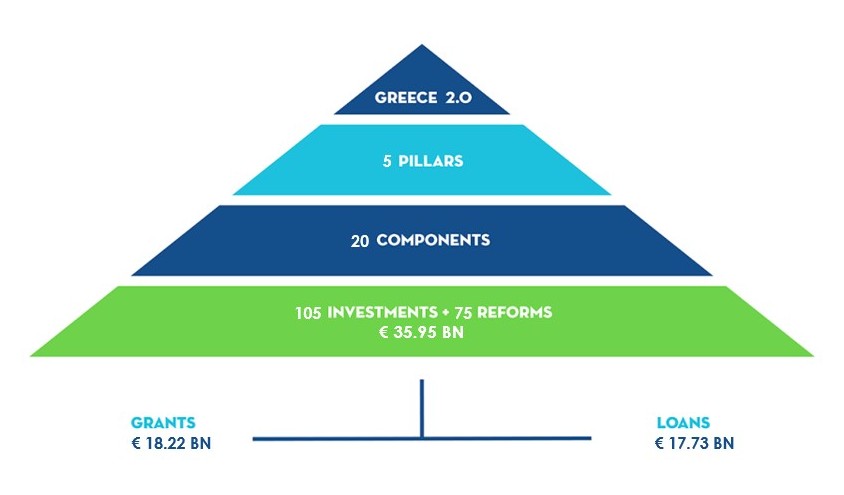At a glance
NextGenerationEU
In January 2020, the COVID-19 pandemic arrived in Europe, leading to a health crisis with major socio-economic consequences. The EU’s response was immediate, putting in place — among others — a temporary recovery instrument, NextGenerationEU, designed to raise funds οn the capital markets and make them then available to its Member States, to implement ambitious reforms and investments.
Recovery and Resilience Facility
The core of NextGenerationEU is the Recovery and Resilience Facility (RRF), the largest EU funding programme to date, projected to disburse up to €650 billion in grants and loans to Member States. The RRF Regulation entered into force in February 2021, stipulating that each Member State will submit a National Recovery and Resilience Plan (NRRP) identifying the reforms and investments that the Member State commits to implement.
In February 2023 the RRF Regulation was amended to include the implementation of the REPowerEU plan – the Commission’s response to the global energy market disruption caused by Russia’s invasion of Ukraine.
National Recovery and Resilience Plan
The National Recovery and Resilience Plan ‘Greece 2.0’ was adopted on July 13, 2021, by the Economic and Financial Affairs Council of the European Union (Ecofin), amounting €30.5 billion.
Οn December 2023, its revision was approved, concerning mainly new investments and reforms under REPowerEU as well as expanding the existing loan program, thus increasing its budget to €35.95 billion.
Smaller scale targeted revisions were approved on July 2024 and January 2025. All related Implementing Decisions and documents are available in the Useful Documents section.
Greece 2.0 includes 105 investments and 75 reforms, structured around five pillars:
- Green Transition
- Digital Transformation
- Employment-Skills-Social Cohesion
- Private Investments and Transformation of the Economy
- REPowerEU
Its resources are channeled into grants and loans and is expected to mobilize over €60 billion of total investment in the country by August 2026, when all projects should have been implemented.


